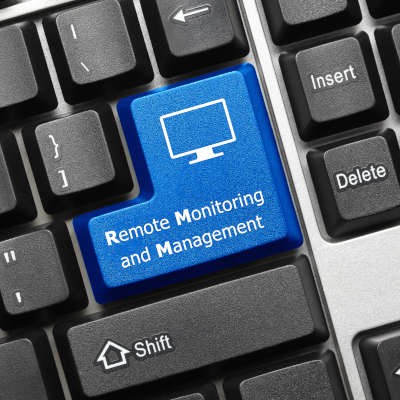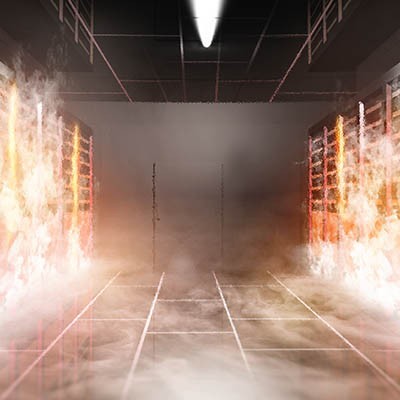Ferrum Technology Services Blog
We are constantly trying to find the most effective ways to communicate just how much value our services can bring a business, nonprofit, or municipal organization. Since almost all organizations rely heavily on their technology, it stands to reason that getting the most value out of their IT support should be a priority. In many ways, managed IT services are the answer to this issue. Let’s look at some of the most valuable parts of using managed services.
Your employees appreciate when you give them all the tools they need to complete their day-to-day tasks. If you take the time to provide them with everything they need to do their jobs, then they will, in turn, provide you with a higher rate of productivity and work quality. One way you can make this happen is by giving them access to the technical assistance they’ll need.
Your technology infrastructure is perhaps one of the most important elements for your business, which means that you need to be sure that it is always prepared to perform as it should. Unfortunately, this can sometimes be a challenge. Let’s go over how you can address this challenge so that you can accomplish as much as possible.
Shadow IT, despite its melodramatic name, is nothing to be trifled with. Shadow IT is the term given to rogue technology and software being installed in your business without being reviewed or approved by IT. It has always given in-house operations difficulties, and remote work has made it an even bigger problem than before.
When your business has computer problems, productivity tends to decline. Unfortunately, IT, for all its benefits, has to be constantly maintained. One of the best ways to maintain your technology, or fix issues when they arise, is to lean on an IT help desk. Let’s take a look at the ways an IT help desk can benefit your business.
As people have increasingly shifted to working remotely, the importance of accessible support for their devices has risen substantially. This has led many businesses to use managed IT service providers, or MSPs, like us to provide this kind of support. To do so, we’ve invested in a series of tools collectively called remote monitoring and management software (RMM). Let’s share some of the reasons that you want an IT support provider that uses RMM to their advantage.
As statewide stay-at-home orders lapse, more and more businesses aim to reopen. For a fair share of these businesses, remote technology has been a godsend. For the businesses that cannot reopen yet, being able to monitor your IT infrastructure while you are out of the office is extremely important to the sustainability of your remote access solutions. Today, we’ll discuss monitoring your infrastructure.
Monitoring parts of your business is a good practice as it allows you to get out in front of any potential problem it may have. As IT is concerned, monitoring is a crucial part of ensuring that every part of your business’ computing infrastructure is working as intended. Today, we thought we’d discuss the tools used to monitor IT networks and infrastructure, and what effect that can have on your business.
If you were asked to describe your average tech support experience, chances are that you remember a time when you had to either wait around for the technician to come around, dealing with downtime the entire time; or, worse yet, unplug your technology and schlep it across town to the break/fix store only to be told that it may be done in the next few days (code for over a week). Today, we’ll tell you how managed IT services can keep you from playing the waiting game.
A slow network can be an infuriating problem under any circumstances, but in the business setting, not understanding its cause can potentially be devastating to operations. For this week’s tip, we’ll examine a few of the most common causes of this slowness, and some of the best ways to resolve the issue at hand.
Efficient use of modern information technology should make business faster and more agile. No matter how you set your business up, however, a slow Internet connection can be a real drag on business. Today, we wanted to go over some scenarios you should know about when your Internet connection is holding your business back; and, solid practices that you can use to get the Internet speeds you need to move business along efficiently.
The IT help desk may seem like it is a throw-in managed service. After all, most of the maintenance to your organization’s IT will be done remotely. This remote maintenance will present your team with more reliable computers, servers, and networks. This enhanced reliability will allow them to be more productive, but what happens when they come across an issue in the course of work? Using similar technology, our IT help desk can get their issues resolved and get their technology back up and running quickly.
Do you ever feel as though technology is letting you down? You aren’t alone, every day there are things that happen with our IT here and in the course of managing other business’ IT that makes me think to myself that if they just disconnected all this stuff, they’d be doing all of us a favor. In fact, I have a story I want to tell you to put this in perspective.
For the business that relies on their IT, malfunctioning systems can be costly, both in terms of maintenance and the loss of productivity from downtime. When your business chooses to outsource its IT support it gains access to several services designed to keep downtime to a minimum and keep your technology working for you. In part two of our five-part series on the benefits of managed services, we describe the value of our 24/7 help desk and other forms of IT support.
A world without any technical issues bogging down your organization is rather picturesque, wouldn’t you agree? The issue here is that it’s often not possible for businesses that struggle with payment to make ends meet--particularly in regard to technology maintenance. You can potentially prevent a mound of problems in the future by providing your team with the technology assistance needed to get them through their day-to-day duties.
How many devices and technology solutions does your organization have to manage on a day-to-day basis? More often than not, small businesses have a limited quantity to work with for IT services, whether it’s a budget that’s too small or a workforce that’s too stretched. The problem is that IT troubles wait for no one, so you have to do everything you can to prevent them--even if it means asking for help from others.




















